
Scouting in Kentucky has a long history, from the 1910s to the present day, serving thousands of youth in programs that suit the environment in which they live. Kentucky has a very early Scouting heritage, as the home state of Daniel Carter Beard.
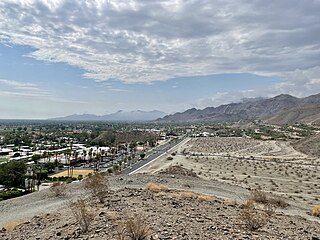
Rancho Mirage is a city in Riverside County, California, United States. The city is a low-density desert community with resorts, golf courses, and country clubs within the Colorado Desert section of the Sonoran Desert. Nestled along the foothills of the Santa Rosa Mountains in the south, it is located several minutes east of Palm Springs. The city is adjacent to Cathedral City, Palm Desert, and unincorporated Thousand Palms. The population was 16,999 at the 2020 census, down from 17,218 at the 2010 census, though the seasonal population can exceed 20,000. Incorporated in 1973, Rancho Mirage is one of the nine cities of the Coachella Valley.
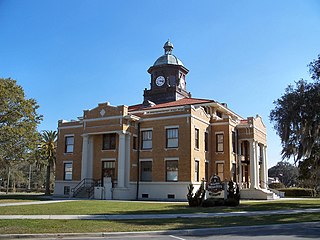
Inverness is a city and the county seat of Citrus County, Florida, United States. It is near the 10,950-acre (4,430 ha) Flying Eagle Preserve. As of the 2020 census, the population was 7,543, up from 7,210 at the 2010 census. It is part of the Homosassa Springs, Florida Metropolitan Statistical Area.
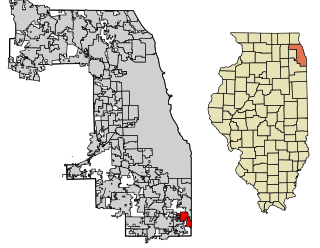
Lynwood is a village in Cook County, Illinois, United States, and a suburb of Chicago. The population was 9,116 at the 2020 census.

Summit Township is a township in Erie County, Pennsylvania. The population was 7,339 at the time of the 2020 census, up from 6,603 at the 2010 census.

Haymarket is a town in Prince William County, Virginia, United States. The population was 1,545 as of the 2020 census.

Indian Springs State Park is a 528-acre (2.14 km2) Georgia state park located near Jackson and Flovilla. The park is named for its several springs, which the Creek Indians used for centuries to heal the sick. The water from these springs is said to have a sulfur smell and taste. Indian Springs is thought to be the oldest state park in the nation. It was acquired from the Creek Indians by the state through the Treaty of Indian Springs (1825) and the Treaty of Washington (1826). Thereafter, Indian Springs has been operated continuously by the state as a public park, although it did not gain the title "State Park" until 1931. The area became a resort town in the 19th century. It became an official "State Forest Park" in 1927. In 1931, along with Vogel State Park, it became a founding unit of Georgia's state park system.

The Sheltowee Trace Trail is a 343-mile (552.00 km) National Recreation Trail that was created in 1979 and stretches from the Burnt Mill Bridge Trail Head in the Big South Fork National River and Recreation Area in Tennessee to northern Rowan County, Kentucky. The trail is named after Daniel Boone, who was given the name Sheltowee when he was adopted as the son of the great warrior Chief Blackfish of the Shawnee tribe.

Lake Barkley, a 58,000-acre (230 km2) reservoir in Livingston County, Lyon County and Trigg County in Kentucky and extending into Stewart County and Houston County in Tennessee, was impounded by the U.S. Army Corps of Engineers in 1966 upon the completion of Barkley Dam. Both the lake and the dam are named for Vice President Alben Barkley, a Kentucky native.
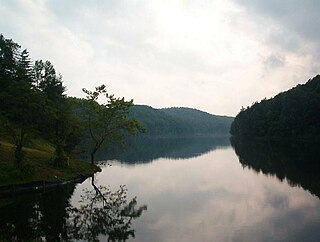
Greenbo Lake is a 181-acre (0.73 km2) reservoir nestled in the Appalachian foothills of Greenup County, Kentucky. The lake was jointly created in 1955 by the Greenbo Lake Association and the Kentucky Department of Fish and Wildlife Resources. Its distinctive name derives from the combination of the names of the county it is located in and nearby Boyd County. The association held a competition for the naming of this lake and the winner picked the name.
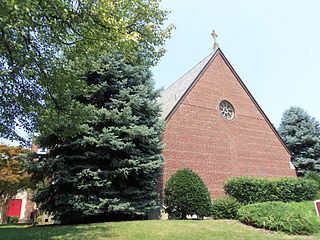
Woodside Park is a neighborhood located in Silver Spring, Maryland, in the United States.

Greenbo Lake State Resort Park in Kentucky is a resort park in the northeastern part of the commonwealth, close to the town of Greenup, Kentucky in Greenup County on Kentucky State Route 1. It features a 36-room lodge named for Greenup County resident and writer Jesse Hilton Stuart, a 63-site campground with 35 primitive sites, a swimming pool with slides, two tennis courts, an 18-hole miniature golf course, an amphitheater and a scuba refuge area. The lodge contains a 232-seat dining room. It is centered on the 300-acre (120 ha) Greenbo Lake that features a boat dock and marina. There are over 25 miles (40 km) of hiking, biking and horseback trails. The park hosts a variety of community events each year including a quilt show, murder mystery dinner theaters, scrapbooking, and a 5K race.
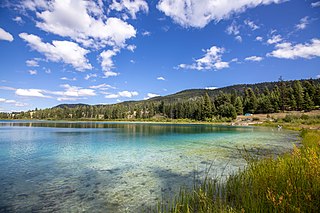
Kentucky Alleyne Provincial Park is a provincial park in British Columbia. The park is located 38 kilometres south of the city of Merritt, and east of the community of Aspen Grove. The park is named for two of its largest lakes, Kentucky Lake and Alleyne Lake. All lakes in the park have a distinctive turquoise colouration.

Jenny Wiley State Resort Park was founded as Dewey Lake State Park on January 1, 1954, with Dewey Lake near Prestonsburg, Kentucky as its centerpiece. It was renamed in the early 1950s for Virginia "Jenny" Wiley, a pioneer woman who is remembered as a survivor of captivity by Native Americans. It became one of the resort parks in the state in 1962 with the opening of the May Lodge.

John James Audubon State Park is located on U. S. Route 41 in Henderson, Kentucky, just south of the Ohio River. Its inspiration is John James Audubon, the ornithologist, naturalist, and painter who resided in Henderson from 1810 to 1819 when Henderson was a frontier village.

French Lick Resort is a resort complex in the Midwestern United States, located in the towns of West Baden Springs and French Lick, Indiana. The 3,000-acre (12 km2) complex includes two historic resort spa hotels, stables, a casino, and three golf courses that are all part of a $500 million restoration and development project.
Buckhorn Lake State Resort Park is a state park located in the northwest corner of Perry County, Kentucky. The park itself encompasses 856 acres (346 ha), while Buckhorn Lake, a mountain reservoir lake which serves as its major feature and which was created by damming the Middle Fork of the Kentucky River, covers approximately 1,230 acres (500 ha). The park is adjacent to the northern edge of the Daniel Boone National Forest.
Pennyrile Forest State Resort Park is a park located in northwestern Christian County, Kentucky, just south of Dawson Springs, Kentucky. The park encompasses 863 acres (349 ha) and takes its name from a colloquial form of the word pennyroyal, a small flowering plant native to the area.

Semiahmoo Bay is the southeastern section of Boundary Bay on the Pacific coast of North America in British Columbia, Canada. The bay is named for the Semiahmoo First Nation, who originally occupied the area. The Semiahmoo Peninsula borders the bay and was home to cannery operations. It is now home to the Semiahmoo Golf Resort.
Arlington is a historic slave plantation located in Columbia, Howard County, Maryland, now part of the Fairway Hills Golf Course.

















